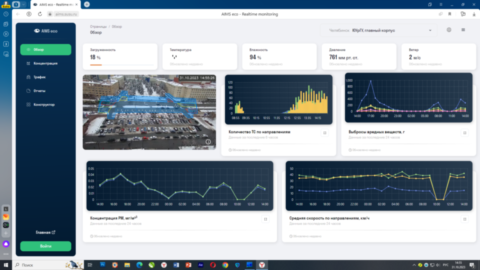One of the key problems of road traffic organization are the vehicle holdups, even in the periods between rush hours. The constant slowdown, braking and acceleration actions result in the decrease of the crossings efficiency and the increase of tailpipe pollution. Scientists from South Ural State University have become the first in Russia to develop a mathematical model, which can give hints to drivers as to at what speed they should drive for a free flow through crossings.
“We propose to use the artificial intelligence to calculate the average speed at which a vehicle can enter the green phase of the traffic lights,” shared assistant at the Department of Automotive Engineering Olga Fadina. “To achieve that, a great number of factors will be taken into account: the distance between crossings; the speed at which the fist vehicle from the previous crossing is moving; the number of vehicles waiting in line, as well as of those approaching from the neighbouring streets and yard territories; the types and makes of vehicles; the speed at which vehicles leave crossings – this will be calculated in advance using their dynamic gauges. The quality of road pavement will also be taken into consideration: ice up, rain-drenched road, tram tracks, and road gradient.”
Roads will be monitored using an intelligent vehicle monitoring system AIMS (Adaptive Intelligent Mobility System), developed at SUSU. The idea is that the recommended speed should be displayed on dynamic traffic signs installed between crossings. Also such data could be uploaded into mobile apps or Yandex Navigator. Similar technical solutions already exist in the world. For example, Vоlvo company displays speed recommendations on board of their vehicles. While the invention by the Chelyabinsk scientists can be used by everyone.
“Using this mathematical model, we hope to improve the crossings efficiency in the periods between rush hours by 10%–30%,” said Olga Fadina. “The proposed system of video monitoring does not require special expenses: it includes only traffic cameras and software. The main challenge is to upload the huge bulk of data for training of the AI. In order to calculate at what speed the line of vehicles at a crossing will clear, it is not enough just to know the number and categories of the vehicles. For instance, we must take into account what the position of a bus in the line is – the first, second, third, or the last one – the time of clearing of the crossing depends on this as well. And currently I am calculating all these variants.”
According to the scientists, there should be no problems with the discipline among drivers: if the majority sticks with the recommended speed limit, the rest will have to follow in the general flow whether they like it or not. In the future, a whole traffic lights system could be created, which would adjust to the city’s traffic flow in a real time mode.
Already intelligent transportation systems have successfully been implemented in a number of the world’s big cities, such as London, Toronto, or Stockholm. Equipment of a big city with an adaptive traffic control system is a technically challenging task, and the scientists from Chelyabinsk have made yet another step closer to its solution.
“Indeed, our AIMS-Eco system could take on part of the functions of the adaptive traffic control system,” explained Associate Professor of the SUSU Department of Automotive Engineering Vladimir Shepelev. “In real time mode, it can build a digital model of the traffic flow, assess its intensity, density, speed and direction of traffic.”
This development by the Chelyabinsk scientists is already being tested in the city of Magnitogorsk, mainly to monitor the exhaust emissions from motor vehicles. The system classifies vehicles, detects ten types of exhaust emissions, while taking into account both the traffic flow intensity and the meteorological factors, such as wind velocity and direction, humidity, pressure, and temperature of the environment. At the first stage, 12 camera posts doing the measurements and assessments are being tested. At the second stage, 14 more will be added, and other 21 by 2025–26. All 47 cameras would allow to control the emissions from all transport vehicles in Magnitogorsk.
Over time, the artificial intelligence would coordinate the traffic flow all around the city, forecast traffic jams, and distribute the load. The implementation will become possible thanks to the development of 5G technologies, distributed computing and cloud services. Already by the end of 2030s, AI-based systems will become part of the “smart mobility” in big cities.
The research is being conducted with the support from the Priority 2030 program of strategic development of universities under the Science and Universities national project.




